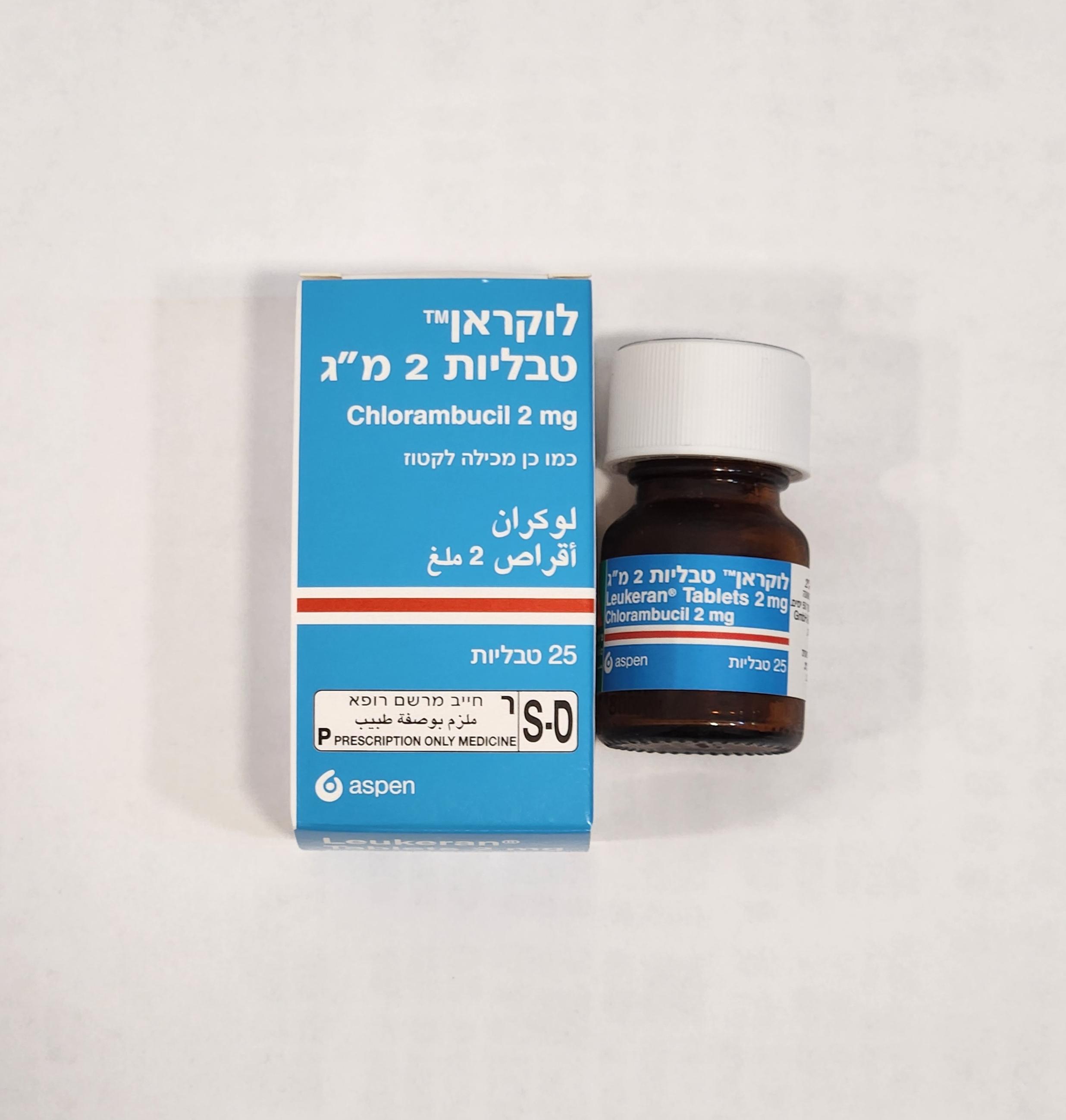Quest for the right Drug

לוקראן טבליות 2 מ"ג LEUKERAN TABLETS 2 MG (CHLORAMBUCIL)
תרופה במרשם
תרופה בסל
נרקוטיקה
ציטוטוקסיקה
צורת מתן:
פומי : PER OS
צורת מינון:
טבליה : TABLETS
עלון לרופא
מינוניםPosology התוויות
Indications תופעות לוואי
Adverse reactions התוויות נגד
Contraindications אינטראקציות
Interactions מינון יתר
Overdose הריון/הנקה
Pregnancy & Lactation אוכלוסיות מיוחדות
Special populations תכונות פרמקולוגיות
Pharmacological properties מידע רוקחי
Pharmaceutical particulars אזהרת שימוש
Special Warning עלון לרופא
Physicians Leaflet
Special Warning : אזהרת שימוש
4.4 Special warnings and precautions for use Continued treatment with Leukeran should be assessed if a rash develops since there have been reports of Stevens-Johnson Syndrome in patients receiving Leukeran (see section 4.8). Safe Handling of Leukeran tablets: See section 6.6. Immunisation using a live organism vaccine has the potential to cause infection in immunocompromised hosts. Therefore, immunisations with live organism vaccines are not recommended. Patients who will potentially have autologous stem cell transplantation should not be treated with chlorambucil long term. Monitoring Since Leukeran is capable of producing irreversible bone marrow suppression, blood counts should be closely monitored in patients under treatment. At therapeutic dosage Leukeran depresses lymphocytes and has less effect on neutrophil and platelet counts and on haemoglobin levels. Discontinuation of Leukeran is not necessary at the first sign of a fall in neutrophils but it must be remembered that the fall may continue for 10 days or more after the last dose. Leukeran should not be given to patients who have recently undergone radiotherapy or received other cytotoxic agents. When lymphocytic infiltration of the bone marrow is present or the bone marrow is hypoplastic, the daily dose should not exceed 0.1 mg/kg body weight. Children with nephrotic syndrome, patients prescribed high pulse dosing regimens and patients with a history of seizure disorder, should be closely monitored following administration of Leukeran, as they may have an increased risk of seizures. Mutagenicity and Carcinogenicity Chlorambucil has been shown to cause chromatid or chromosome damage in man. Secondary malignancies, most commonly acute secondary haematologic malignancies (especially leukaemia and myelodysplastic syndrome) have been reported, particularly after long term treatment (see section 4.8). A comparison of patients with ovarian cancer who received alkylating agents with those who did not, showed that the use of alkylating agents, including Chlorambucil, significantly increased the incidence of acute leukaemia. Acute myelogenous leukaemia has been reported in a small proportion of patients receiving Chlorambucil as long term adjuvant therapy for breast cancer. The leukaemogenic risk must be balanced against the potential therapeutic benefit when considering the use of Chlorambucil. Sugar intolerances Patients with rare hereditary problems of galactose intolerance, the Lapp lactase deficiency or glucose-galactose malabsorption should not take this medication.
Effects on Driving
4.7 Effects on ability to drive and use machines No information on the effects of Chlorambucil on the ability to drive and use machines is available.

שימוש לפי פנקס קופ''ח כללית 1994
Chronic lymphocytic leukemia, Non Hodgkin's lymphoma, Hodgkin's disease
תאריך הכללה מקורי בסל
01/01/1995
הגבלות
תרופה שאושרה לשימוש כללי בקופ'ח
מידע נוסף
